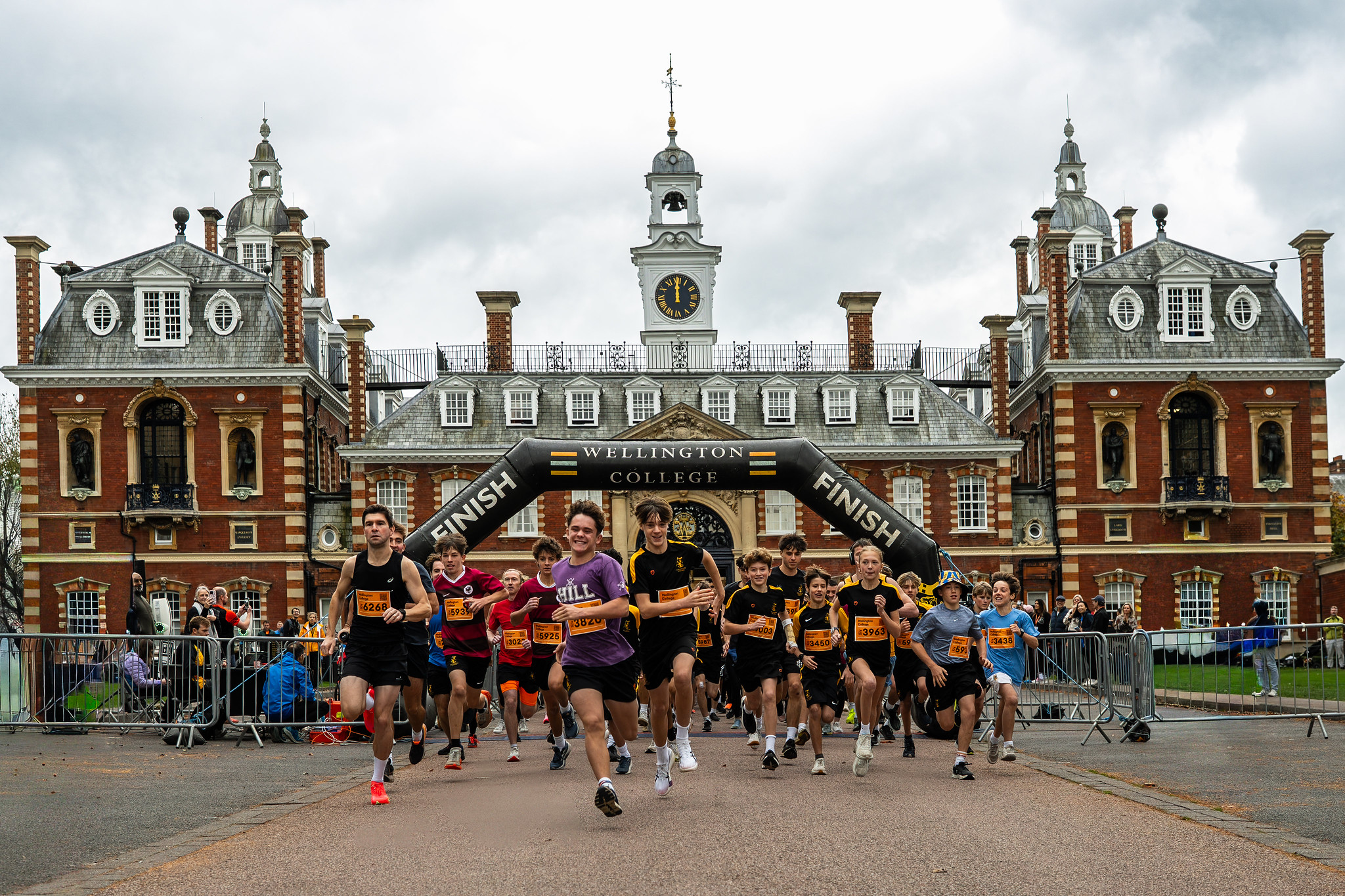
On the last day of September, we few, we happy few with luck booking places, assembled at St Pancras for an exceptional Battlefield Tour. Roll-ons for kitbags, clutching M&S rations, we boarded the 09.01 to Lille. Her onboard attention to the 46-page historical handout revealed Lucy as Head Girl. Our Parent Pals Battalion were deemed a diverse bunch of D-streamers by our inspiring leader Sir Anthony Seldon, much to our collective delight. He led by example and included himself in that definition, setting a high bar. Colour Sergeant Clive Harris (Ret’d), co-guide extraordinaire and our one consistent A-streamer, had his hands full.
Five years passed between the assassination of Archduke Franz Ferdinand and the Treaty of Versailles. For us, on paper, this compressed into sixty hours, twenty sites, eight maps, six poems, two nights in a Ypres hotel and one defensively driven coach. During this Great War, 65 million servicemen fought (5 million British), of which 8.5 million were killed (750,000 British) and 21 million injured (1.5 million British). As the trip unfolded, so did our understanding that The Great War isn’t reducible to numbers or nationalities.
From Lille, our first stop was Mansell Copse. The sun’s beauty lavishly outpoured on Noel Hodgson’s familiar hill, the brave Devonshires’ Cemetery and our band of parents. Something shifted. Everyone in our group had family touched by this war, down the generations, all of us, changed. Social mobility from privates to officers, women working and voting, ostracised conscientious objectors, mental and physical wounds, our reading list expanding from Anthony Beevor to Bessel van der Kolk and the poets. Words learned as children, still in our bones and now coming up for Flanders air. We came down from Noel’s familiar hill as one.
At Lochnagar Crater we surveyed Western Front topography. Newfoundland Park told a heartbreaking tale of their regiment. Lutyens’ Thiepval Memorial inspired mixed reactions, the design requiring 73,000 readable inscriptions. Clive explained intricate details of multiple battles, gently overturning assumptions (soldiers did have leave, privates often respected officers). Passchendaele Museum’s brutally honesty was challenging – it did its job well. Hill 60 demonstrated bunkers and a no man’s land measurable in inches. In the trenches of Vimy Ridge we appreciated how war develops national identity.
The Ramparts cemetery’s gentle walk of contemplation digested these experiences. An openness of spirit at our meals left us able to sit and break bread with any of our number. Some visited the graves of relatives, generously sharing their stories. Nearly 700 Wellington College alumni were killed, twice that number wounded. Only two other UK schools suffered higher casualties. Among inscriptions we saw at Tyne Cot were the names of 10 Old Wellingtonians.
Together we listened to the Last Post, protected by the arch of the Menin gate, where 61 more Old Wellingtonian boys and men were listed. Each with their own lives lived, their own loves. We stood in the music of remembrance, with our shared experiences as Wellington parents. We laid wreaths to the ultimate sacrifice. Desiring a world where the risk of such sacrifice reduces. Fearing we may now have the opposite. Appreciating that we all, globally, have far more in common than divides us. Contemplating our individual contributions to holding the torch.
This Tour helped me better understand my stretch-bearer Great Uncle Frank. How, in his butterfly collecting, he was doing the work of the War Graves Commission. How my family’s strict religious working-class conscientious objection led to social ostracisation which can unwittingly bubbles up in me – unfairly veering from a certain accent, helicoptering parentally, being suddenly tongue-tied in a Speech Day catering tent…
In the days after this Tour I was a gentler person, letting more cars out of minor roads, making space for my daughter to tell me something she’d needed to and hadn’t previously had room to share. It brought me back to poetry, to Owen and Sassoon but also to my own words. Though the Great War is beyond words bar poetry maybe. Poetry, music, dance, art – these are our tools to draw closer to the torch. Creativity. Lifeblood for our children. And their parents. I wish I’d had this opportunity as my daughter began her Wellington journey. A few teachers and folks who’ve met me in speech day tents likely feel the same. My daughter is now Upper Sixth. So, if you get a chance, sign up to a Battlefields Tour. Your self needs you to. Then maybe your country won’t have to tell your child it needs them.
With deep gratitude to Sir Anthony Seldon, as a brave bearer of the torch, Clive Harris, for his service for our country, Murray Lindo, fine singers of the songs, all the excellent organisers and all our Parent Pals Battalion.
Written by Claire Dunn









